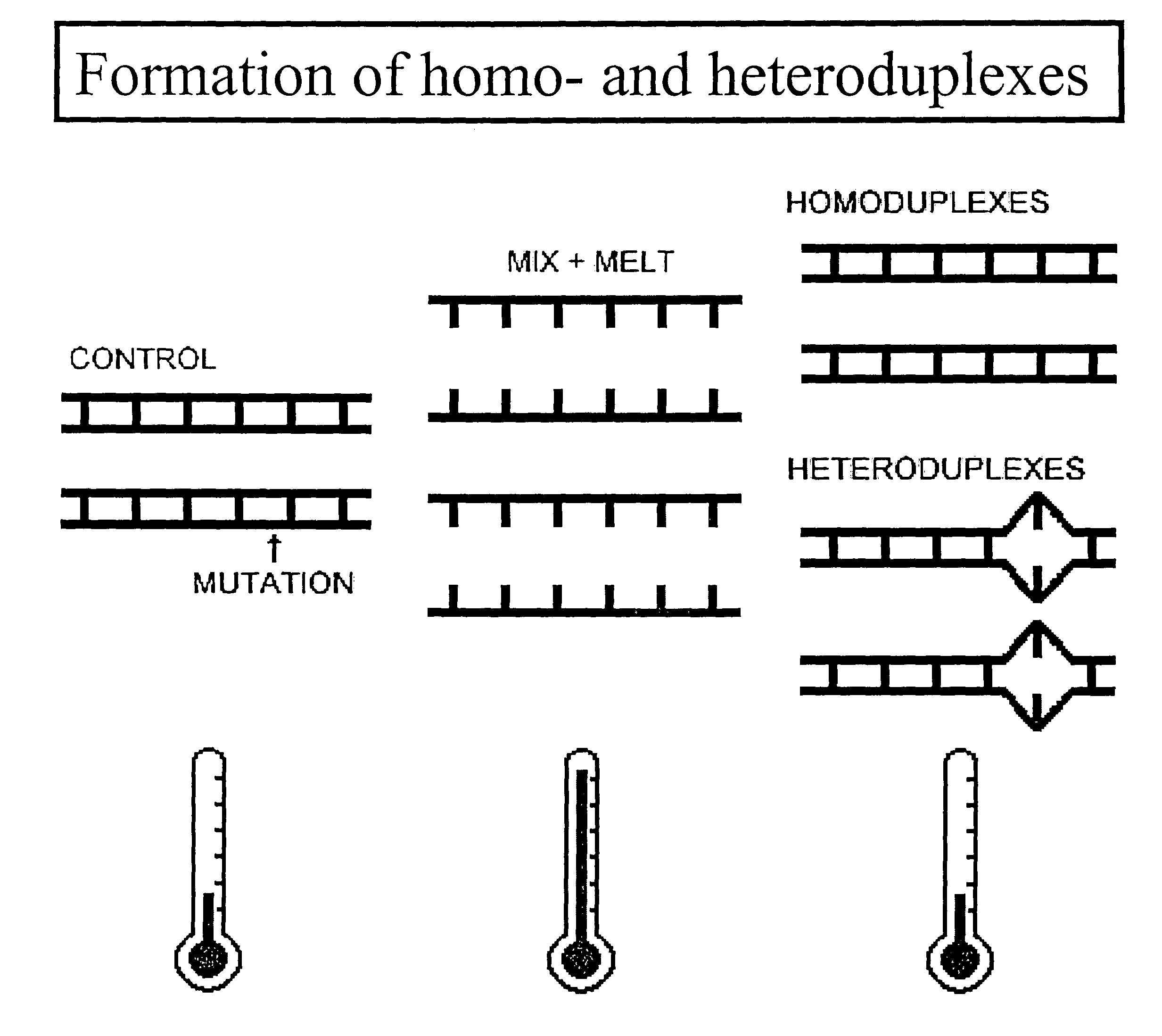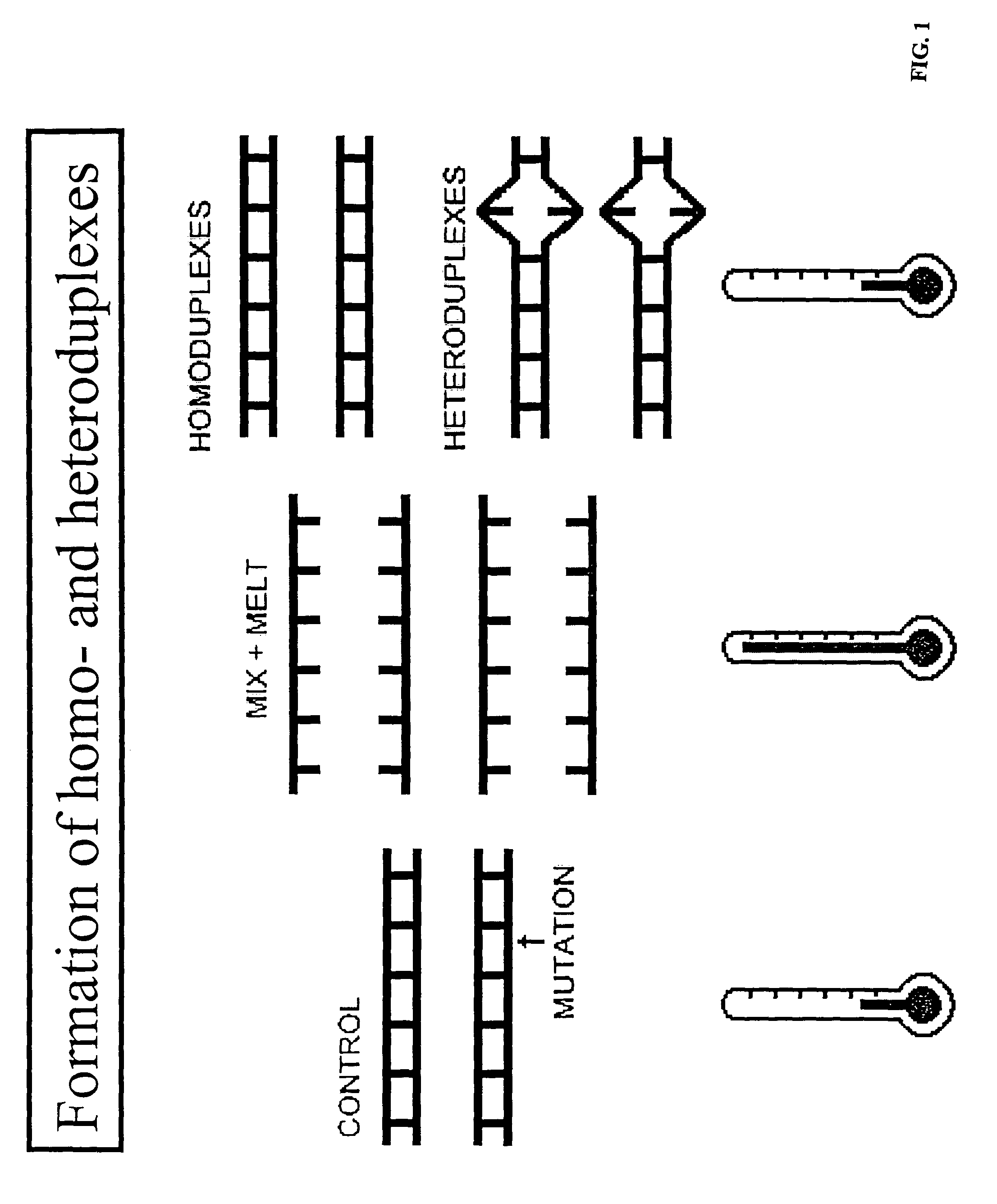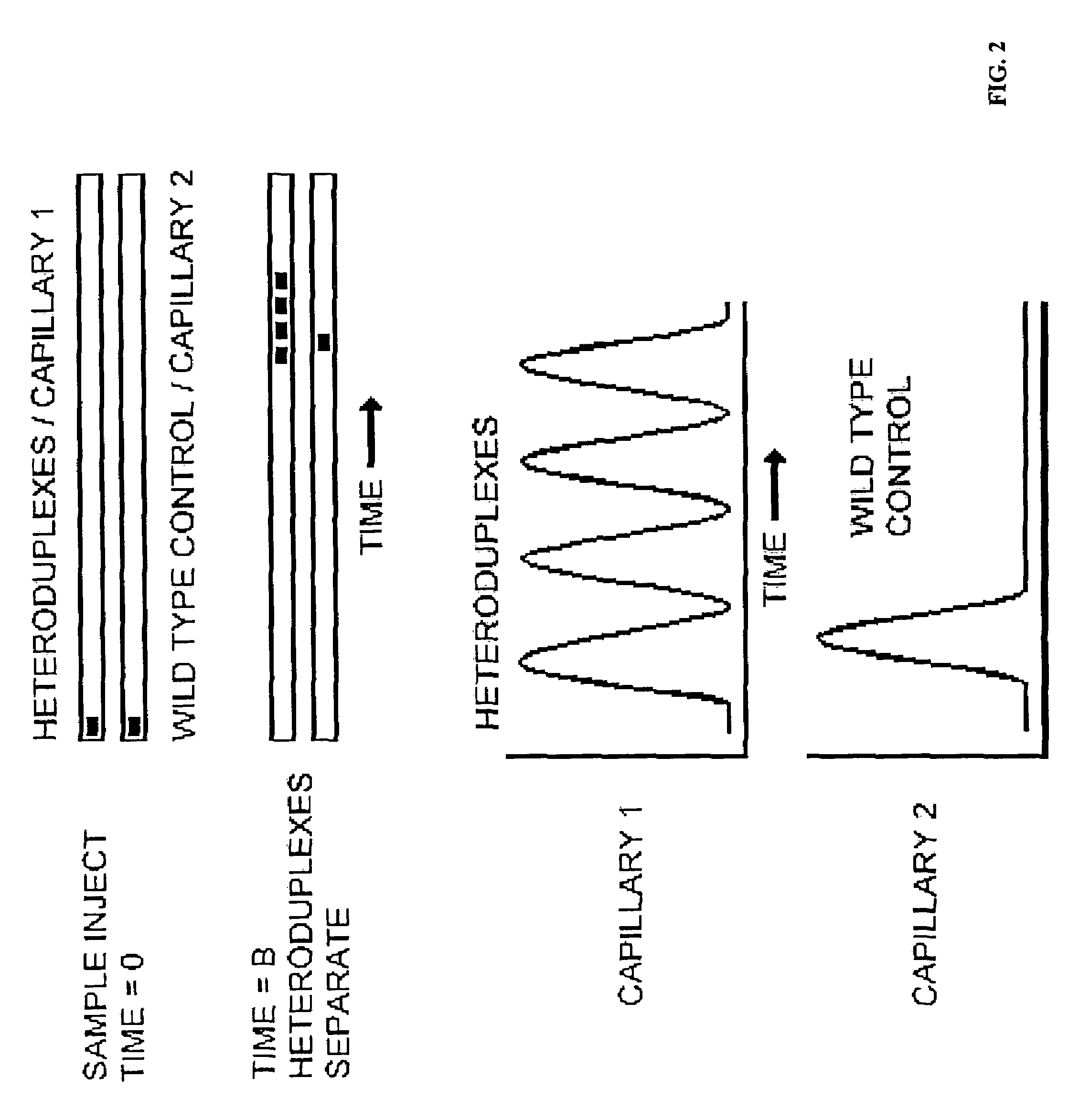System and method for determining known DNA variants with temperature gradient electrophoresis
a temperature gradient electrophoresis and variant technology, applied in the field of system and method for determining variants in polynucleotides, can solve the problems of cost and laborious
- Summary
- Abstract
- Description
- Claims
- Application Information
AI Technical Summary
Benefits of technology
Problems solved by technology
Method used
Image
Examples
Embodiment Construction
[0064]The present invention provides a powerful tool for studies of disease associations using SNPs as the DNA markers. It may be used in pharmacgenomics to relate individual genotypes to drug usages. The invention may also be used for disease diagnostics. There is an increasing demand for the genotyping technology for more efficient detection of DNA variations. A technical system disclosed here is suitable to conduct high throughput analysis for known mutations and single nucleotide polymorphisms (SNPs). Unlike use of temperature gradient electrophoresis for discovering unknown mutations (e.g., Gao and Yueng, 1999), the method of the present invention may be used for genotyping of known DNA variants (such as SNPs or mutations) in a genome. Thus, the exact locations of SNPs / mutations are determined in the art. The method in accordance with Gao and Yueng requires a sequencing step to locate the exact position of the mutation. In one embodiment of the present invention, at least one a...
PUM
| Property | Measurement | Unit |
|---|---|---|
| temperature gradient electrophoresis | aaaaa | aaaaa |
| electrophoresis | aaaaa | aaaaa |
| size | aaaaa | aaaaa |
Abstract
Description
Claims
Application Information
 Login to View More
Login to View More - R&D
- Intellectual Property
- Life Sciences
- Materials
- Tech Scout
- Unparalleled Data Quality
- Higher Quality Content
- 60% Fewer Hallucinations
Browse by: Latest US Patents, China's latest patents, Technical Efficacy Thesaurus, Application Domain, Technology Topic, Popular Technical Reports.
© 2025 PatSnap. All rights reserved.Legal|Privacy policy|Modern Slavery Act Transparency Statement|Sitemap|About US| Contact US: help@patsnap.com



